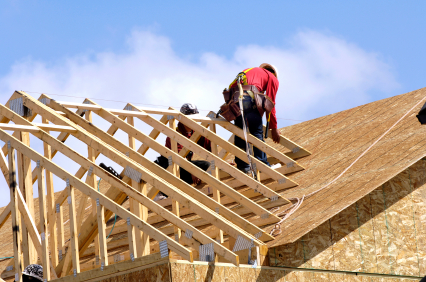
Workplace safety is a subject that’s important for every business but few others encounter the types of dangers found in construction work. In 2019 alone, OSHA reported that there were over 3000 construction deaths. When you take into consideration that fact that construction workers only make up about 8 percent of the total workforce, 20 percent of deaths in the private sector occurred in the construction industry.
There’s no doubt that safety in construction has improved by leaps and bounds over the past decade but there is still a large percentage of these types of fatalities in the construction space that could have been prevented either via proper safety training or use of proper equipment.
So, we put together a list.
Below are the leading causes of construction industry deaths as well as what can be done to prevent them through the application of the proper training and equipment.
Hazard 1: Falls
Falls consistently account for over a third of construction industry deaths each year. The falls are often due to unstable working surfaces, failure to use or misuse of fall prevention equipment, as well as the unsafe use of ladder and scaffolding.
To ensure that your employees are protected, ensure that your scaffolds and ladders meet the safety standards and are properly sized according to the requirements of the project. It is also important to make sure that work surfaces are free from holes, stable, and provide sufficient traction.
Applying the 6-foot rule is another effective fall prevention tip. If employees are working more the 6 feet above another surface, they should have fall-prevention equipment such as guardrails, safety nets, fall arrest systems, restraint systems, and covers.
Regardless of height, it is always advisable to make sure that employees have the proper personal protective equipment (PPE) such as tool lanyards, non-skid work boots, and hard hats.
Obviously, the proper equipment will only be as effective as the training provided. Making sure that employees are properly trained to use their equipment and avoid unsafe practices can be an effective way to lower the risk of accidents and ensure that employees stay safe.
See Our Fall Protection Course
Hazard 2: Struck by Objects
The next major cause of death on construction sites is “being struck by objects” and this accounts for close to 10 percent of construction site deaths.
Vehicle hazards form a major part of this statistic. Ensure that your construction site safety rule include clear routes for vehicles and that employees know how to avoid positioning themselves between fixed and moving objects.
The misuses of heavy equipment such as forklifts and cranes also contribute to these injuries. Ensure that your employees receive proper training on the safe use of this equipment and you will avoid injuries to drivers as well as their team members.
Hazard 3: Electrical Hazards
The dangers that electricity poses have been known for a long time, but electrical safety issues still account for more than 8 percent of construction site deaths. Always locate and identify utilities before any work commences. If your employees are using equipment, ensure that they have located the overhead power lines and are familiar with the minimum safe distance requirements.
Providing employees with double insulated or grounded portable tools as well as using ground-fault circuit interrupters whenever possible is also another effective way to prevent accidents. Scaffolds, ladders, and other platforms pose special safety risks as previously stated, so ensure that employees receive proper training to avoid related electrical hazards.
Hazard 4: Caught In-Between
The caught in-between fatalities account for 7 percent of construction fatalities with most of the deaths occurring due to the collapse of construction sire trenches. One important safety tip is to make sure that trenches with a depth of 5 feet or deeper have sufficient trench wall support and safety measures.
You can also protect employees by marking all utilities prior to digging, providing qualified personnel to inspect the safety of the trench, and training your employees on how to properly protect themselves.
See Our Competent Person Excavation Course
Hazard 5: Hazardous Materials
Construction sites are often full of hazardous materials that can range from toxic airborne materials that may affect respiration to chemical spills that can release toxic fumes or burn.
To prevent exposure, employees should be provided with the safety data sheets (SDS) for any hazardous chemical that’s used at the construction site and should be provided with the right PPE, which includes respiratory protection. It is also important to ensure that employees receiver proper training regarding the proper handling of hazardous materials.
Protecting employees requires being knowledgeable of the possible risks and offering the training and equipment needed to make sure that they safely make it home from the job site. Knowing these 5 hazards can serve as a starting point as you develop a strategy for improving safety on your construction site.



